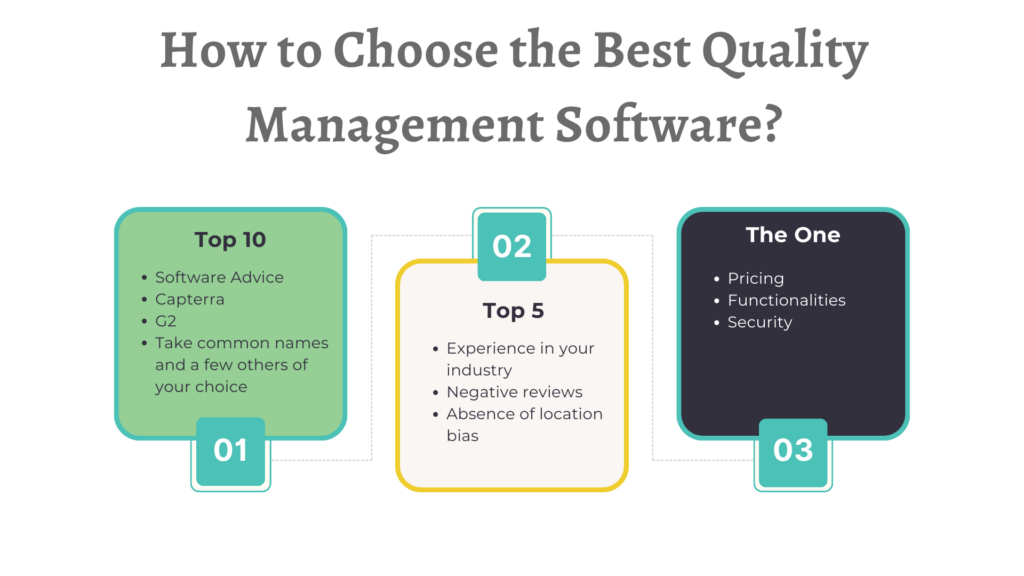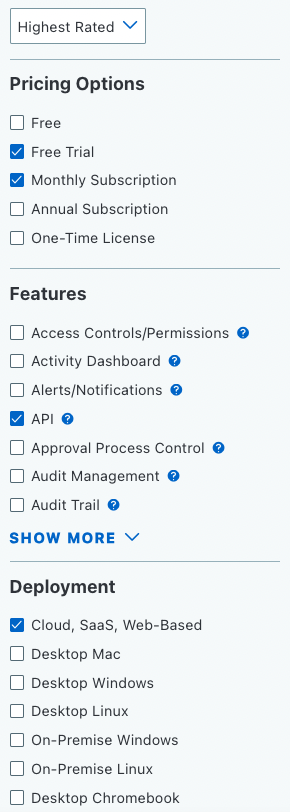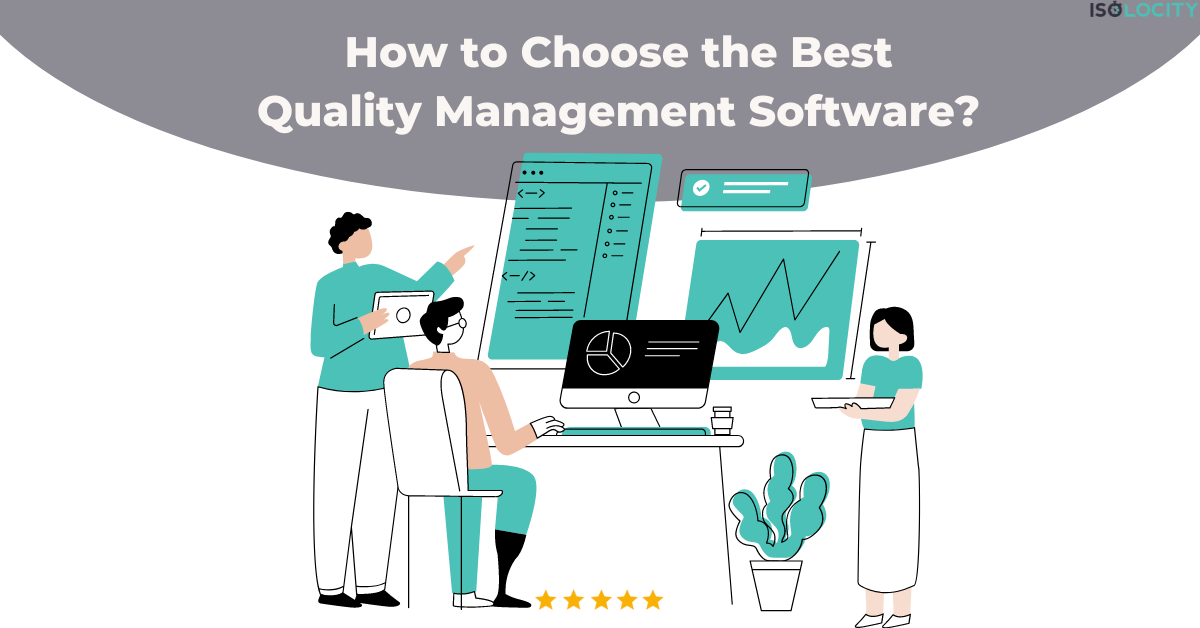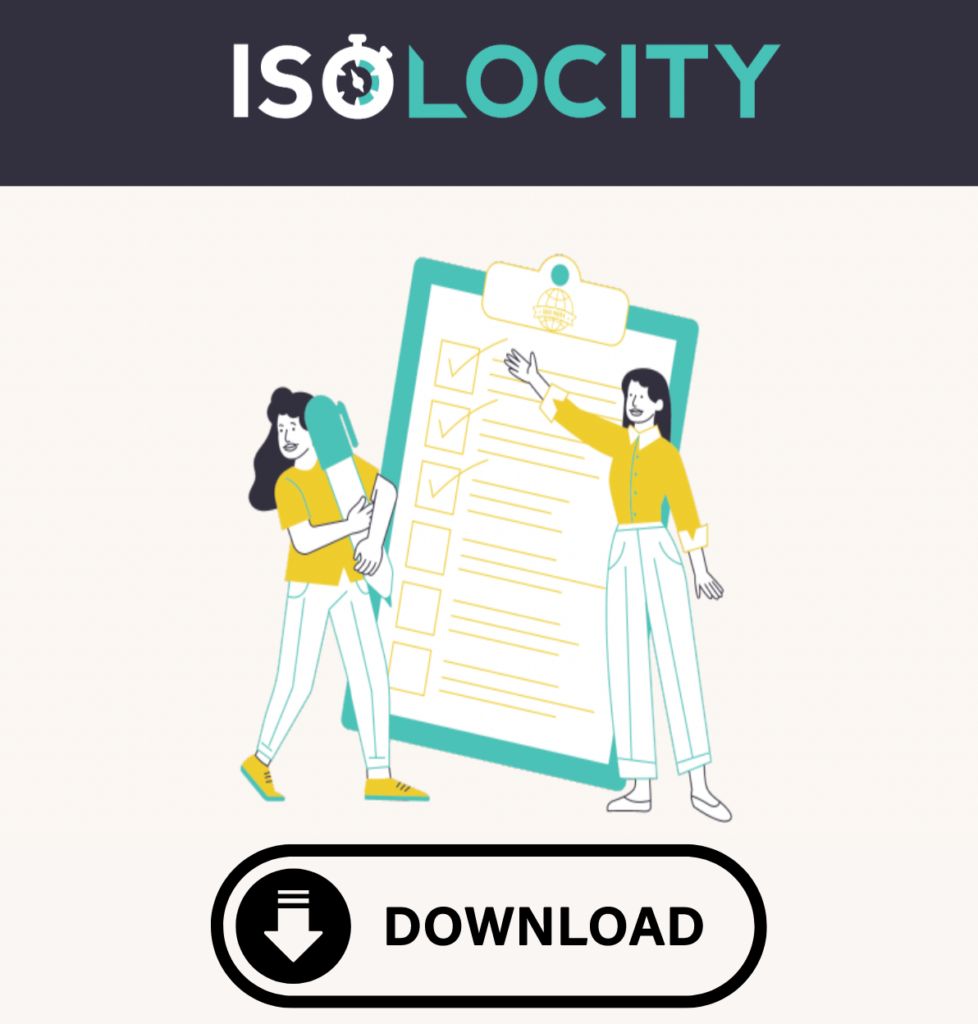When you conduct a Google search for the “best quality management software,” you’ll find numerous articles featuring various names. However, a recurring pattern emerges—they swiftly present a list of the top 5 or top 10 quality management software, often inserting their own name. This might leave you wondering: is this perspective truly unbiased?
Not Fond of Reading? Watch This Video!
In this blog, we refrain from mentioning any specific quality management software, including our own. Instead, we focus on guiding you through the research process. Our aim is to provide you with an unbiased list of the best quality management software.
As you embark on your quest, you might have come across some prominent names, but understanding who they are, what they offer, and assessing their actual effectiveness may still be unclear at this early stage of your exploration.
So, you do what humans do next best: you start asking your acquaintances and colleagues, start gathering some names, and start researching about them. But this approach has a few problems.
- Your acquaintances and colleagues might not know all the names you should know.
- If your acquaintances work in a different industry or location, their needs might be different than yours.
- Once you hear a name from someone, you automatically get a little biased, even without knowing it. This might create issues for your decision-making.
So in this blog, we will try to resolve this problem of yours. We will primarily follow 3 steps:
- How to shortlist your top 10 quality management software
- How to narrow down the top 5 quality management software
- How to finalize the best quality management software
Before you move forward, we have a gift for you. To make this entire blog easy to understand and help you start your work right away, we have a ready-made template that can help you. Download the template from here.
Now let’s continue with the blog, but do keep an eye on the template too.

So let’s get started, shall we?
How to Shortlist Your Top 10 Quality Management Software:
Here, we would recommend a bottom-up approach instead of a top-down approach. So that means instead of asking your friends and acquaintances, you do the initial research by yourself so that you are open to everything. We suggest the below process for this part.
Google will leave you confused because everyone is running ads. So go to these platforms for better clarity.
- Go to Software Advice and take the top 20 quality management software names from there. Even better, if you schedule a call with them, they usually provide free consulting, and based on your needs, they will give you some names too.
- Go to Capterra and check the quality management software category. Now change the following filters:
- Sort by highest-rated
- Pricing options: check off the free trial and monthly subscription, just to make sure you can access the software before signing up, and in case you don’t like it, you can back out, thanks to the monthly subscription.
- Features: Select the API. With an API, you can integrate with any system.
- Deployment: Always choose Cloud, Saas, Web Based. Read our blog on why cloud QMS is always better than on-site deployment.
- After selecting all these filters, this is what it should look like

-
- You will get 25 names; take all of them.
- Go to G2’s Highest Rated Quality Management System 2023 list. Select all 20 names from there too.
These three platforms should give you all the important names you should consider. Now, first of all, take all the common names you have on all three platforms. You will probably get 4–5 such names. These are the companies you should definitely consider. On top of that, take five more that you really like. So with this exercise, you have 10 top-quality management software companies.
How to Narrow Down the Top 5 Quality Management Software:
So now you have your top 10 names. That’s a great start. Let’s move to the next stage now. We recommend the below process for the rejection of 5 players from your list.
- Visit their website and try to understand if they have experience in your domain. You might ask why that matters. Well, if they have experience in certain industries, they are more likely to comply with certain standards relevant to that industry. E.g., if you are in aerospace and defense, AS9100D, AS9110C, and ISO 9001 compliance might be important to you. You might want a vendor who is compliant with the Controlled Goods Program (CGP) and ITAR. If you are not able to find your relevant industry on their website, reject them.
- It is said that one negative review is more important than 10 positive reviews. Anything below 3 stars should be considered a negative review. Also, don’t just look at the numbers here; try to read every negative review and try to make sense of it. While doing this exercise, make sure all the reviews are the latest, because if you consider an old review, that might not be relevant anymore as systems get updated over time. Also do consider the avg. rating (combined average rating of G2, Capterra, and Google) as an important factor too.
- We suggest not getting biased by the location factor. The vendor might be from a different country; that shouldn’t matter, provided they can give you support when you need it. Also, because it’s a cloud-based QMS anyway, the physical presence of the vendor should be the least of your concerns.
While doing this exercise, you might come across two issues. With all the checks, you may be able to shortlist 3 instead of 5, which is fine. There might also be cases where certain parameters give you contrasting results. For e.g. a QMS player that has extremely good ratings and reviews but doesn’t have the necessary compliance you are looking for. In this case, you will have to make a qualitative decision. If you ask us, compliance should always be given more priority, but let’s say the solution you like might be made compliant with a little tweaking.
After this exercise, take the 5 best quality management software and go to the next level.
How to Finalize the Best Quality Management Software:
And here comes the last part: finalizing the best quality management software. Before finalizing, we recommend getting a demo from all the top 5 and giving each one a fair chance. You might even need more than one demo, and at the end of it, you should consider the following points for finalizing your dream quality management software.
Pricing
Getting complete clarity about pricing is the most important aspect because, by this time, you know all the software you have chosen is good. Ask them the following questions:
- Do you have a setup fee?
- Do you charge for basic/employee users?
- Do you charge for training?
- Do you charge for SOPs?
- Do you charge for small customization requests?
Each ‘Yes’ should correspond to one negative point” of these questions. Ideally, you would want a QMS that wouldn’t have any hidden costs. Even if it’s not a concern for you, you wouldn’t like to request cost approvals from your management again and again.
Functionalities
Make a hard and soft checklist of all the functionalities you want. Hard checklist means functionalities you cannot live without, while soft checklist functionalities are nice to have but not essential. This is necessary because not all QMS might have all the functionalities you want; therefore, this classification is crucial. On a broader level, here are some functionalities you should consider, hard or soft, that is up to you.
-
Document Control:
- Version control and document tracking.
- Document approval processes.
- Centralized document repository.
-
Change Management:
- Processes to manage and control changes to products, processes, or documentation.
- Change request tracking and evaluation.
-
Corrective and Preventive Actions (CAPA):
- Identification, investigation, and resolution of non-conformities.
- Root cause analysis.
- Implementation of corrective and preventive actions.
-
Risk Management:
- Identification and assessment of risks related to quality.
- Risk mitigation strategies.
-
Audit Management:
- Planning and execution of internal and external audits.
- Audit findings tracking and resolution.
-
Training Management:
- Training needs assessment.
- Employee training tracking and documentation.
-
Supplier Quality Management:
- Evaluation and monitoring of suppliers.
- Supplier performance tracking.
-
Compliance Management:
- Monitoring and ensuring compliance with relevant standards and regulations.
- Documenting compliance efforts.
-
Measurement and Analysis:
- Collection and analysis of data related to quality performance.
- Key Performance Indicators (KPIs) tracking.
-
Process Control:
- Monitoring and control of key processes to ensure consistency and quality.
-
Continuous Improvement:
- Systems for identifying and implementing improvements in processes and products.
- Regular review of performance metrics for continuous enhancement.
-
Electronic Signature and Records:
- Ensuring the integrity and authenticity of electronic records.
- Reporting and Dashboards:
- Generating reports and dashboards to provide insights into quality performance.
-
Integration with Other Systems:
- Integration with other business systems for seamless data exchange.
- Open API
-
Security and Access Control:
- Ensuring data security and controlling access to sensitive information.
-
Regulatory Compliance:
- Meeting industry-specific regulatory requirements.
-
Mobile Access:
- Accessibility through mobile devices for convenience.
Security
Last but not least, equal importance should be given to security. Always try to go ahead with a QMS that owns its codes; it will always be more secure. Also, try to understand what server they use and whether that is safe enough.
Conclusion:
Upon completion of this extensive process, you will have a finalized Quality Management System (QMS) grounded in information and data, devoid of biases. When selecting a QMS vendor, one may often be pleasantly surprised by the competitive offerings from new players compared to established ones. Hence, it’s crucial to remain open-minded, recognizing that these newcomers may offer valuable perspectives and solutions to enhance your QMS, guiding you to see without passing premature judgments.





